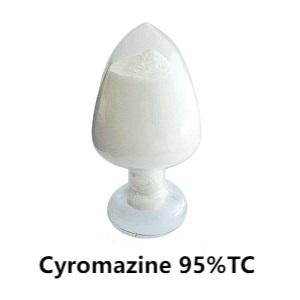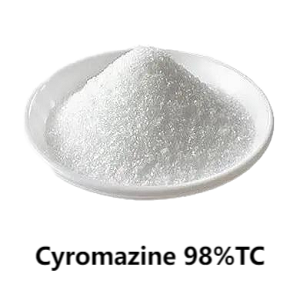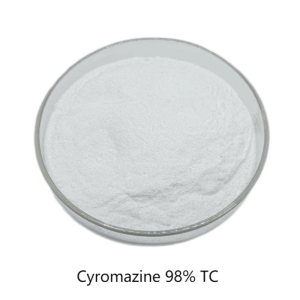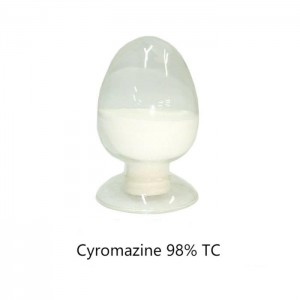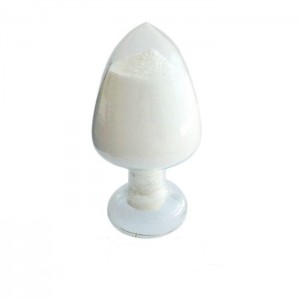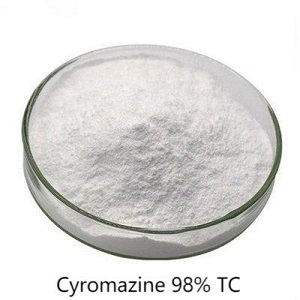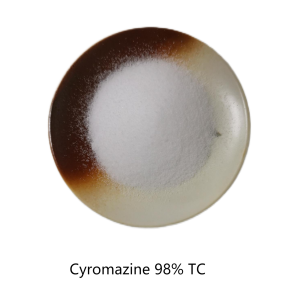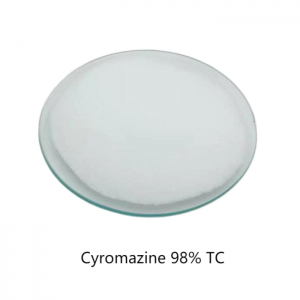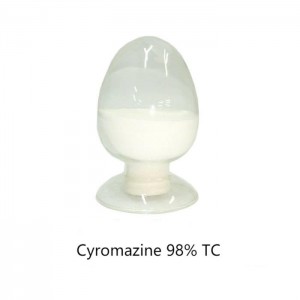Insecticide Cyromazine 98%TC Used for Agrochemical Pesticide
Introduction
Cyromazine is a highly effective insect growth regulator commonly used in agriculture and veterinary medicine to control the growth of insects such as flies and maggots. This potent compound disrupts the normal development of insects, ultimately leading to their demise. Cyromazine is a synthetic chemical that is generally white or off-white in color. Its unique mode of action and wide range of applications make it an invaluable tool in pest control.
Features
1. Targeted Insect Control: Cyromazine offers precise and targeted insect control. It effectively controls the growth and development of insects such as flies, maggots, and other pests without harming beneficial insects or pollinators.
2. Resistance Management: As an insect growth regulator, cyromazine helps in preventing the development of resistance in insects. Unlike conventional insecticides, cyromazine targets specific stages in the insect life cycle, reducing the chances of resistance.
3. Versatile Application: Cyromazine can be used in various settings, including agricultural, veterinary, and household applications. It can control insects in livestock and poultry operations, animal housing facilities, crop fields, as well as domestic settings like kitchens and garbage disposal areas.
4. Long-Lasting Effect: Once applied, cyromazine exhibits long residual activity. This means that a single application can provide continuous insect control for an extended period, reducing the need for frequent reapplication.
5. Low Toxicity: Cyromazine has low toxicity to mammals, making it safe to use in various applications. It has a low environmental impact and poses minimal risks to humans and animals when used according to the recommended guidelines.
Application
1. Agriculture: Cyromazine is widely used in agriculture to control insects on crops. It is effective against leafminers, fruit flies, and other pests in fruits, vegetables, and field crops. Whether used on a small or large scale, cyromazine provides reliable pest control without causing harm to crops or the environment.
2. Veterinary Medicine: In veterinary medicine, cyromazine is commonly used to prevent and control fly strike in sheep and other animals. Fly strike, caused by blowfly larvae, can result in significant economic losses and animal welfare issues. Cyromazine formulations can be applied topically or orally to provide effective control and prevent the spread of fly infestations.
Using Methods
1. Dilution and Application: Cyromazine is available in different formulations such as wettable powders, granules, and sprays. Before application, it is important to carefully read and follow the instructions provided by the manufacturer. The product should be diluted according to the recommended rates and applied using suitable equipment such as sprayers or dusters.
2. Timing: The timing of cyromazine application is crucial for maximizing its effectiveness. It should be applied at the appropriate stage of the insect’s lifecycle, targeting vulnerable stages such as eggs, larvae, or pupae. The specific timing may vary depending on the target insect and the crop or application area.
3. Safety Precautions: When handling cyromazine, it is essential to wear appropriate protective gear, such as gloves and goggles, as recommended by the product label. Avoid direct contact with skin or inhalation of spray mist. After application, follow the recommended waiting period before allowing people or animals to enter the treated area.




